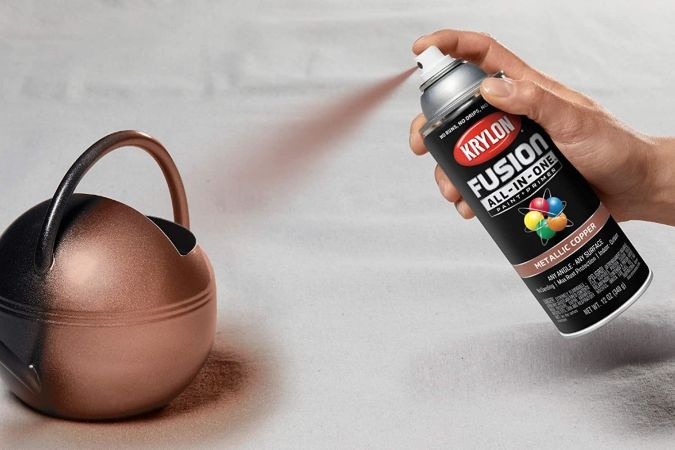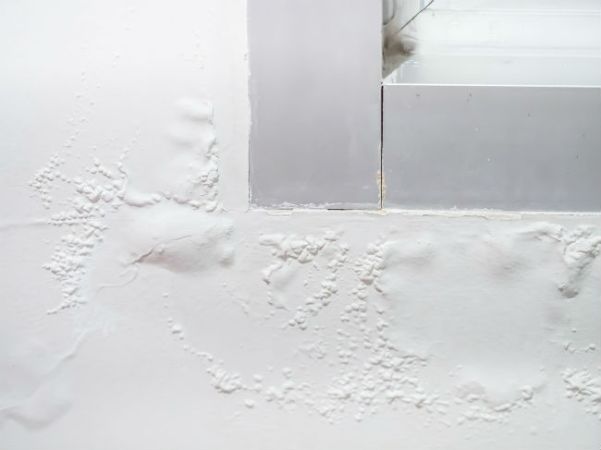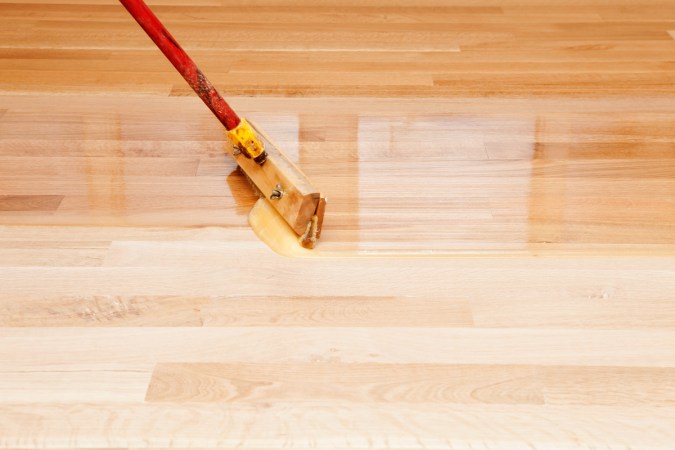We may earn revenue from the products available on this page and participate in affiliate programs. Learn More ›
To paint concrete successfully—so that it looks good and lasts a long time—proper preparation is of paramount importance. If you follow the steps below, you can achieve satisfying results no matter what concrete you choose to paint, be it the garage floor, basement floor or wall, outdoor patio, or any other part of your property.
Project Summary
- Use patching compound to fill any holes, scratches, or gouges in the concrete surface.
- Clean the concrete thoroughly with trisodium phosphate (TSP) and warm water, then let dry.
- Apply paving paint or porch-and-floor enamel, first to the perimeter and then the middle. Let dry.
- Scrape away any lumps or bump, and sand any areas where the paint failed to adhere.
- Apply the second and final coat of paint, then let dry.
Tools & Materials
Bobvila.com may earn a commission from purchases made through these links.
- Power sander
- Fine-grit sandpaper discs
- Pole sander
- Metal-bristled brush
- Paint roller
- Putty knife
- Rubber gloves
- Dust mask
- Safety goggles
How to Paint Concrete
STEP 1: Patch gouged or otherwise damaged areas with concrete filler.
When you set out to paint concrete, the process begins rather unglamorously with concrete filler, which acts as a primer for the painted surface. Use the patch compound to fill in all holes, scratches, and gouges in the concrete. After allowing sufficient dry time, sand the repaired areas until they are smooth.
STEP 2: Clean the concrete surface with TSP.
Using a solution of trisodium phosphate (TSP) and warm water, clean the concrete floor or surface thoroughly, removing all the oil and grease that would otherwise discolor the paint job. Work the solution into the concrete with a metal-bristled brush. To determine the proper ratio of TSP to water, read the package instructions, but figure on about one-quarter cup TSP to one gallon of warm water. TSP can harm skin and eyes if it makes contact, so be sure to wear full protective gear.
STEP 3: Let the surface dry thoroughly before you begin to paint the concrete.
As the TSP reacts with the concrete, you are likely to notice a slight bubbling across the floor or surface. Let that bubbling continue coating the concrete for about 20 minutes, then hose it off, completely washing away the TSP. Let the surface dry for two days before painting. After it dries, run your hand over the concrete; it should feel like 120-grit sandpaper.

STEP 4: Brush paint onto the perimeter of the concrete.
Sweep the area or wipe it down with a dry cloth, depending on the orientation of the surface. Now you’re ready to start painting. Use a paintbrush to apply an initial coat of paving paint (or porch-and-floor enamel) over the perimeter of the area. A regular medium-size paintbrush enables you to achieve good coverage when painting corners and edges, whether you’re working with an interior or exterior space.
STEP 5: Roll on more paint to cover the interior.
Next, use a paint roller to fill in the sections that you didn’t coat with the brush. If you’re painting a concrete floor, remember to start on the far side of the room, so you end up finishing near a doorway or another convenient stepping-off point. In other words, don’t paint yourself into a corner of the floor! Let that first coat of paint dry for at least 16 hours or so.
STEP 6: Scrape or sand surface imperfections.
Putty knife in hand, scrape away any protruding lumps or bumps that appeared after the first coat dried. Sand any areas where the paint failed to adhere; if you do end up sanding again, don’t forget to sweep again, too.
STEP 7: Apply a second and final coat of paint to the concrete.
Apply the second coat of paint in the same way that you applied the first. This time around, however, press down firmly with the roller, mashing the paint into the holes the first coat didn’t penetrate. Before considering the project complete, let the second coat dry for about five days, particularly if the painted surface is a heavily trafficked floor.
















